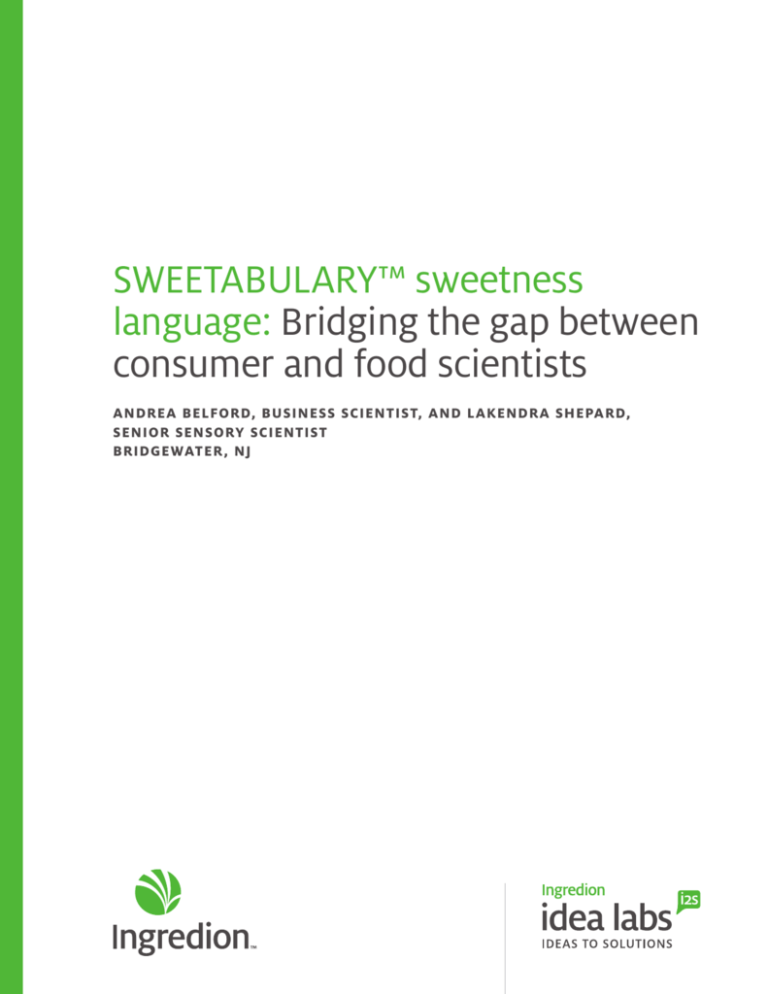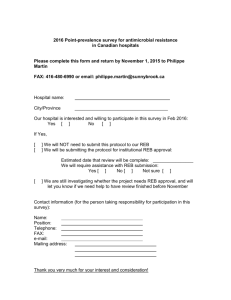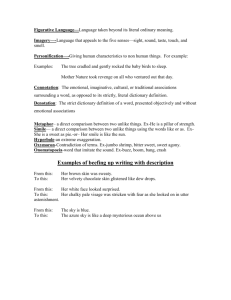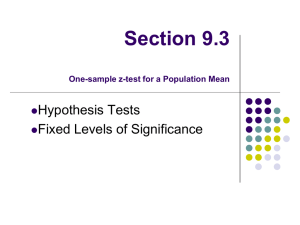
SWEETABULARY™ sweetness
language: Bridging the gap between
consumer and food scientists
ANDREA BELFORD, BUSINESS SCIENTIST, AND LAKENDRA SHEPARD,
SENIOR SENSORY SCIENTIST
BRIDGEWATER , NJ
SWEETABULARY™ sweetness language: Bridging
the gap between consumer and food scientists
The typical consumer can quickly tell you whether something is too sweet or not sweet enough. But can the
consumer describe sweetness character? Does that sweet
taste remind them of a caramel candy or cotton candy? Is
it too sweet on the first sip or sweet long after they swallow the food or beverage? Understanding the difference
between sweet on the tongue and sweet aromatic may not
be important to the consumer but those details can help
the product developer realize what drives consumer likes or
dislikes. To bridge the gap, the innovators of Ingredion have
developed a new sweetness language. SWEETABULARY
sweetness language is the proprietary vocabulary that connects the consumer experience of sweetness with scientific
terms that lead to perfectly sweetened products. With
Ingredion and SWEETABULARY translations, you’ll be speaking the language of innovation and new product success.
Sensory analysis
Sensory analysis is a scientific discipline that uses human
assessors (sensory panelists) to measure and evaluate
food products and ingredients using their five senses of
sight, smell, taste, touch and hearing. Sensory analysis can
mainly be broken down into three sub-sections:
Discrimination/Difference testing: This testing is done
to determine if there is any perceptible difference in the
product or ingredient. Panelists are trained on the test
method and may be tested for sensory acuity. They do not
have to be highly trained to participate in the test.
Ingredion Incorporated © 2014
FIGURE 1: SWEETABULARY™
2
Consumer Testing: Another name for this category of
sensory testing is “Affective.” This test is run to determine
how well the product is liked or preferred. Panelists are
not trained but may be selected based on demographics
important to the product being tested.
Descriptive testing: This form of sensory testing measures how products differ in specific sensory attributes.
Sensory panelists are selected after going through full
sensory acuity testing. Training for descriptive testing is
in-depth and the outcome is a highly trained expert panel.
Differentiating sweeteners using sensory
analysis
Descriptive analysis can be designed to accurately measure
the sensory characteristics required to answer the objective of the product being tested. In descriptive analysis all
the sensory attributes are measured on a 15 point scale by
an expert trained sensory panel. Areas of descriptive analysis that differentiate sweeteners and can be used as a tool
to help product developers formulate consumer preferred
products are 1) concentration response, 2) time-intensity,
and 3) descriptive flavor profile analysis.
Concentration response measures the desired sensory
attributes across a range of solution concentrations. It is
especially helpful when formulating with high potency
sweeteners since they are not linear when the sweetness response is measured across a concentration curve.
Nutritive sweeteners tend to be linear across the curve.
This can be illustrated when comparing Rebaudioside A
(Reb A) to sucrose (Figure 2, page 3).
FIGURE 2: CONCENTRATION RESPONSE CURVES FOR
REB A VS. SUCROSE
Sucrose Concentration in %
2
4
6
8
10
12
14
16
16
14
10
12
8
10
6
8
Reb A
Sucrose
4
6
4
2
2
0
200
400
600
800
1000
1200
0
Reb A Concentration in ppm
When comparing the two sweeteners in Figure 2 you can
determine the sucrose sweetness equivalence of Reb A at
different concentration levels. For example, 6% sucrose
(upper x-axis) gives approximately a 7 sweetness response
(right y-axis) using the 15 point scale the panelist has been
calibrated on. On the left y- axis find the 7 for the Reb A
sweetness response, draw a perpendicular line to where it
intersects the Reb A curve and drop the line to the lower
x-axis. It shows that approximately 375 ppm of Reb A is
needed to match a 6% sucrose solution. This can be useful
information for the product developer when substituting
one sweetener for another in food formulations.
Figure 3 shows the sweet aftertaste of four different sweeteners. Panelists measure the sweet taste immediately after
swallowing and then each successive 20 seconds for two
minutes. All samples were tested at a sucrose sweetness
equivalence of 6%. Results show that Reb A and Ace-K stay
sweeter longer (or linger longer) than sucrose and aspartame. If the product developer wants to substitute Reb A or
Ace-K for sucrose, they will have to compensate the flavor
system to address the lingering sweetness.
Temporal or time intensity sensory measurements are
also important to distinguish sweetener differences. Time
intensity is the measurement of sensory stimuli over a
continuous or set time interval. Often a product developer
can match the maximum perceived sweetness, but the time
of sweetness onset and sweetness linger can vary. This can
cause the overall flavor perception of the food to be different and not meet consumer expectations.
Figure 4 shows a time intensity curve for multiple attributes for Reb A. In this case the testing starts when the
panelists ingest the sample. Using a computer program
designed for time intensity measurements, panelists
continuously track the various flavor attribute responses
after swallowing for a total of 2 minutes. Results show that
sweet intensity decreases steadily to a point where the
intensity matches the astringent attribute. This may show
why some consumers feel Reb A has a particular aftertaste
they do not like. Depending on the application, a product
developer may be able to mask bitter and astringent taste
with a sweet modulator.
FIGURE 3: TIME INTENSITY MEASUREMENT OF SWEET
FIGURE 4: CONTINUOUS TIME INTENSITY MEASUREMENT
AFTERTASTE OF VARIOUS SWEETENERS
Ace K
Aspartame
Reb A
Sucrose
Immediate
2 min.
OF DIFFERENT REB A ATTRIBUTES
Sweet
Bitter
Astringent
Licorice
Ingredion Incorporated © 2014
0
Sensory Response for Sucrose
Sensory Response for Reb A
12
3
TABLE 1: SWEETABULARY™ SWEETNESS LANGUAGE —
SET SENSORY TARGETS
FLORAL
EARTHY WOODY
Lily flower, brown soap
Potting soil, popsicle stick
GREEN
Green twigs, green grass, cucumber skin,
cis-3-hexanol
PAPERY
CONFECTIONERY
Sugar bag, brown paper bag, white paper,
brown cardboard, confectionery sugar
SWEET BROWN
Caramelized sugar, raisin paste, molasses,
clover, honey
FRUITY
Ethyl maltol, cotton candy, ethyl butyrate,
Juicy Fruit gum
MINERAL
Gravel/stones, calcium carbonate
SOLVENT
Sharpie marker
SAVORY & SPICE
Cured meat, nutmeg, smokey, licorice
Descriptive flavor profile analysis using
SWEETABULARY™ sweetness language
Sweeteners add more to food than just a sweet taste.
Each sweetener can contribute distinct flavors to the food
or beverage. Through screening and tasting dozens of
different sweeteners by trained sensory experts, Ingredion
has developed a new sweetness language which is being
used by its teams globally. SWEETABULARY characterizes
diverse sweetener profiles using flavor references such
as ‘earthy/woody,’ ‘green,’ ‘floral,’ ‘papery confectionery,’
‘sweet brown,’ ‘fruity,’ ‘mineral,’ ‘solvent’ and ‘savory and
spice.’ These highly specific attributes (Table 1) translate
into the precise scientific terms that we can formulate to
— for consumer-pleasing results.
Figure 5 shows how sucrose, Reb A and saccharin differ
beyond the sweet taste. These differences can potentially
influence other flavors when formulating for a customer.
This is demonstrated in Figure 6. The data in the spider
graph shows how replacing Reb A in a reduced calorie
orange juice can add back the sweetness but can alter the
orange flavor. When combined with a sweet modulator,
Reb A give the sweetness along with the expected orange
flavor found in 100% orange juice.
Formulating using SWEETABULARY and
DIAL-IN® Sweetness Technology
SWEETABULARY and DIAL-IN Sweetness Technology will
help you find the best functional solution for your desired
sweetness profile, taking into account your processing
requirements. We’ll help you select from our broad portfolio
of nutritive, non-nutritive, naturally based or high potency
sweetness options — and share our in-depth baseline analyses of our sweetener portfolio and comparative studies.
SWEETABULARY sweetness language represents one more
way in which Ingredion is driving market-shaping innovations to help you achieve your sweetness goals. We update
our sweetness database daily and conduct regular sensory
evaluations to map ingredient and product attributes. And
with 24 R&D facilities around the world, we’re ready to
support your sweetness success no matter where you are.
FIGURE 6: FORMULATING ORANGE JUICE USING
SWEETABULARY SWEETNESS LANGUAGE AND
DIAL-IN SWEETENER TECHNOLOGY
Sweet
FIGURE 5: DESCRIPTIVE PROFILE USING SWEETABULARY
Cooling
Metallic
Astringent
Other
Woody
Sweet
7
6
5
4
3
2
1
0
AST
Sour
Salty
Ingredion Incorporated © 2014
Other
Bitter
Paper/
confection
Brown paper/
cardboard
Earthy –
potting soil
4
Metallic
Earthy
8
7
6
5
4
3
2
1
0
Sour
Bitter
Salty
Citrus
complex
Fresh orange
juice
Licorice
Cotton
candy – EM
Licorice
Fruity (EB)
Cucumber
melon
Solvent
Honey
Molasses
Cooked orange juice
Woody
Green
Sweet
brown
Solvent
Sucrose
Reb A
Saccharin
Distilled
orange oil
Orange peel
100% Orange Juice
50% Orange Juice w/Reb A 95
50% Orange Juice w/Reb A 95 Flavor Modulator 3
The latest science from
Ingredion Idea Labs™
Ingredion Idea Labs™ science-based problem solving fosters ideas, innovations and solutions to
help you differentiate your products, optimize costs and get to market faster with greater success
and profitability. Our network of 24 labs invites spirited collaboration through consumer insights,
applied research, applications knowhow and process technology. Visit www.ingredionidealabs.com.
1-866-961-6285 | sp.ingredion.com/us
Ingredion Incorporated
5 Westbrook Corporate Center
Westchester, IL 60154
The information described above is offered solely for your consideration, investigation, and independent verification. It is up to you to decide whether and how to use this information.
Ingredion Incorporated and its affiliates make no warranty about the accuracy or completeness of the information contained above or the suitability of any of its products for your
specific intended use. Furthermore, all express or implied warranties of noninfringement, merchantability, or fitness for a particular purpose are hereby disclaimed. Ingredion
Incorporated and its affiliates assume no responsibility for any liability or damages arising out of or relating to any of the foregoing.
The INGREDION, DIAL-IN, INGREDION IDEA LABS and SWEETABULARY marks and logos are trademarks of the Ingredion group of companies. All rights reserved. All contents copyright © 2014.








